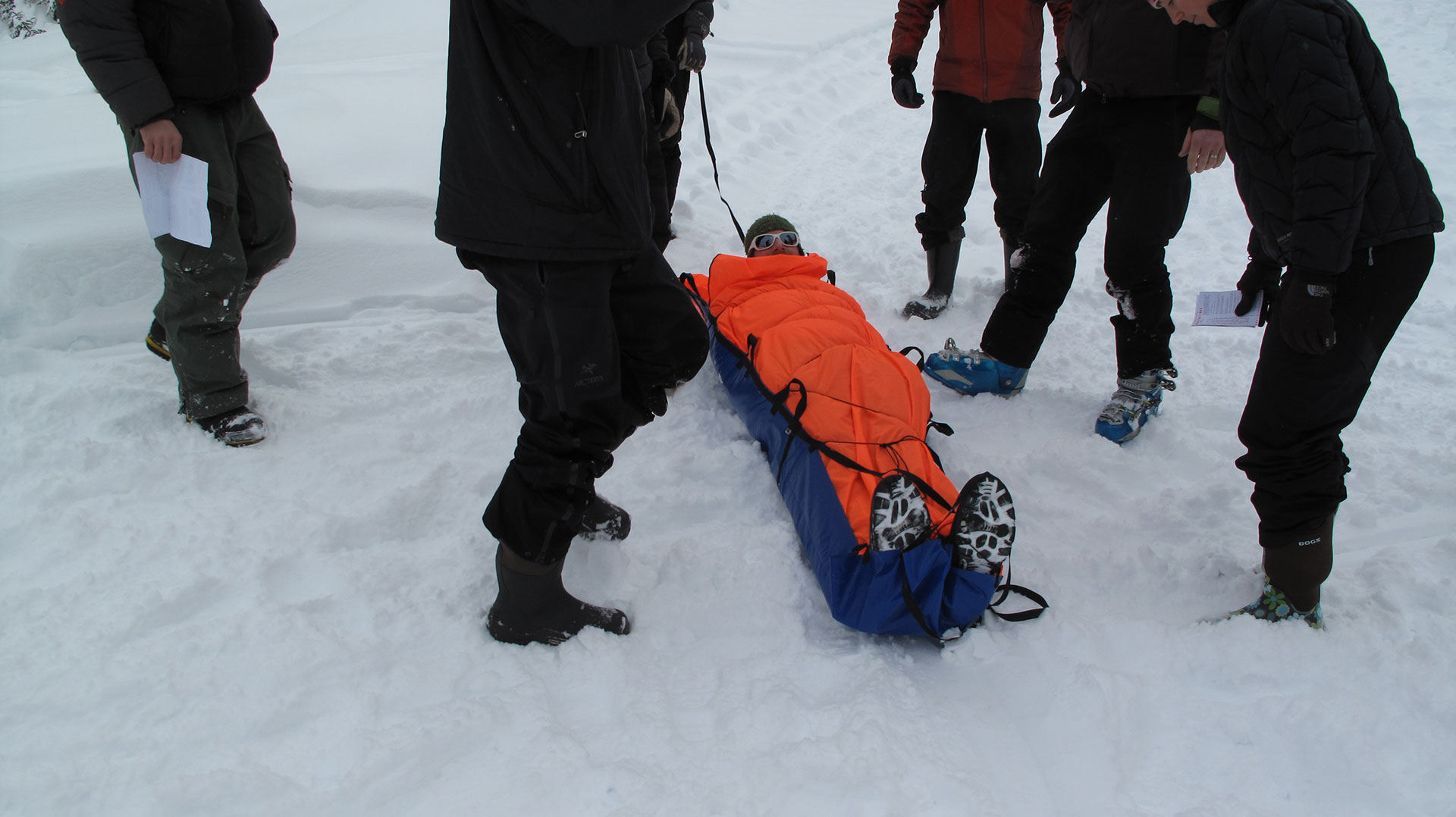Post-Rescue Patient Care
We owe it to ourselves, friends, family, and others who enjoy spending time in the backcountry to do our best to travel safely through backcountry terrain. Unfortunately, avalanches happen, and the onus can be on any member of our team to perform a practiced and effective companion rescue response. We are each other’s best chance of survival. While our focus is often on practiced searching, probing, and shoveling, we need to recognize that once the patient is located and recovered, a whole new phase of the rescue begins. Here are the life-saving steps you need to apply after you dig someone out.
Most avalanche fatalities occur as a result of respiratory arrest due to asphyxiation, therefore the immediate assessment of avalanche survivors must focus on airway management. Is the patient breathing adequately, and does he have an open airway? Decreased or absent breathing can occur because of snow packed into the nose or mouth, as well as restricted respiratory excursion due to the pressure of the snowpack. Rescue breathing is warranted if the patient is in respiratory failure or arrest. Warm humidified oxygen, directly from the rescuer is precisely what the patient needs. While rescue breathing, do not worry about exhaling gaseous waste products, especially CO2, into the patient. When you exhale you are breathing out 16 percent oxygen, enough for the patient to adequately oxygenate their tissues.
The second most common cause of avalanche fatalities is trauma. After airway and breathing are addressed, a rapid trauma assessment is the next step in the management of an avalanche victim. This includes a rapid blood sweep to assess for any life-threatening bleeding. With the advent of Gore-Tex and other highly durable materials, severe external bleeding can be hidden from plain sight. You must get down to skin or base layer level, ideally by just lifting or unzipping the patients jacket and pants, avoiding cutting his or her clothing and increasing exposure to the elements. All bleeds should be addressed eventually, but in the time immediately following recovery from a burial, focus on the life-threatening bleeds which will be located in what is called the short wetsuit region, or knees to nose to elbows. Don’t waste your time or the patient’s time with bleeds outside this region in the minutes directly following a recovery.
In addition to avalanche courses, comprehensive medical training is highly recommended for any individual traveling in the backcountry. A Wilderness First Responder course will teach you invaluable medical skills that you can apply to avalanche rescue and beyond. A systematic approach, one that you can recreate even in the most stressful of environments, will allow you remain in control of the scene and provide the best care possible for your patient. Regardless of your level of training, it is also highly recommended that you carry a communication device that works in the backcountry.

A practice rescue in the field.
Quick Tips
- Allow yourself time to think. In the moment, this is time much better spent than just trying to do something without any reason behind it.
- Treat what you see, focusing on the highest threats to survival, and the ones that you have the best chance of treating in the field with limited resources.
- There is no need to move the patient. Following excavation from an avalanche burial, as long as the patient can breathe adequately and you can assess for severe external bleeding, there is no need to move him or her. The sheer force of an avalanche is a significant mechanism for spine injury. Once any threats to life have been assessed and/or ruled out, you can turn your attention to the spine. If the patient can move or bear weight, he is not at risk of a high-risk spinal injury. These patients do not need to be immobilized during evacuation.
- Once a patient is freed from the surrounding snowpack, hypothermia becomes an anticipated problem. Once again, focus on the immediate threats to survival and then address the anticipated problems. Treatment of hypothermia includes warming the patient via their own internal metabolism. To fuel the fire, provide patients with easily digestible simple sugars and carbohydrates. (More jackets piled on top of the patient is not appropriate care.) Protect the patient from heat loss to the ground by placing him or her on an insulated pad and give him or her sugars.
Gavin Dawson owns Global Emergency Medics LLC, and is a lead instructor at Wilderness Medical Associates.


